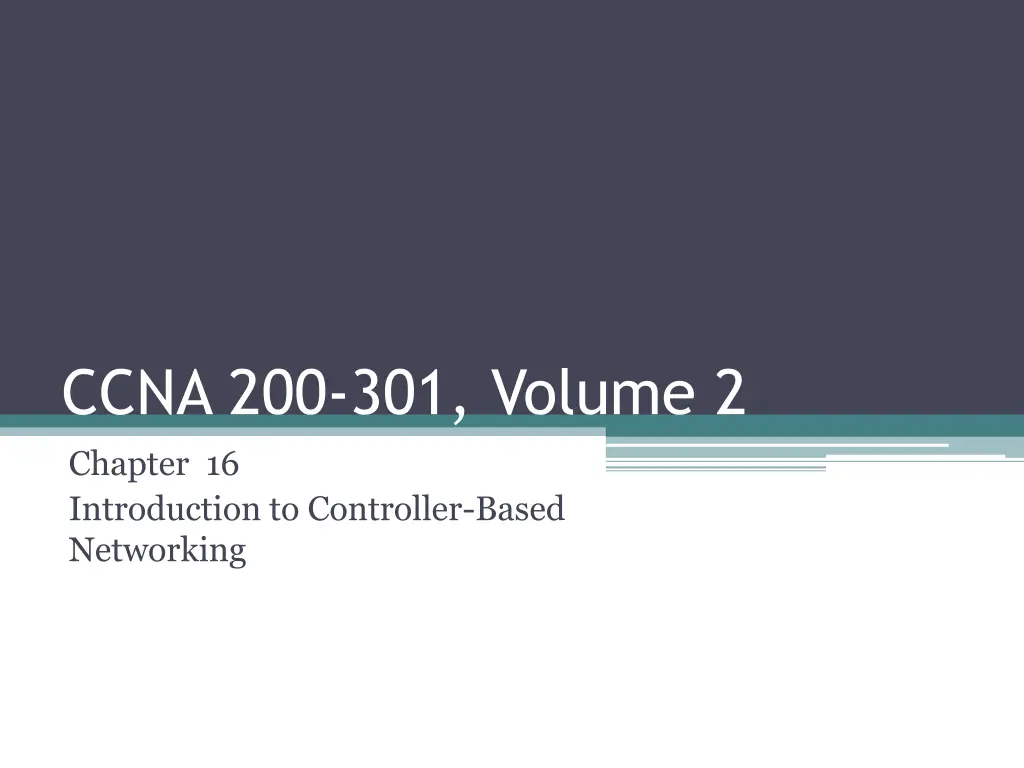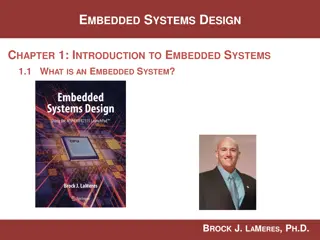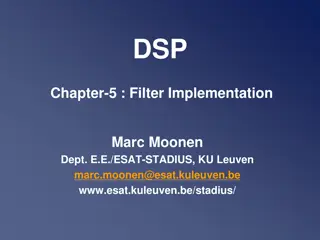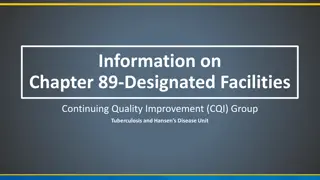
Introduction to Controller-Based Networking in CCNA Studies
Explore the fundamentals of controller-based networking, including network components, topologies, automation impact, and comparison with traditional networks. Delve into the role of control and data planes, APIs, and software-defined architectures in network management.
Download Presentation

Please find below an Image/Link to download the presentation.
The content on the website is provided AS IS for your information and personal use only. It may not be sold, licensed, or shared on other websites without obtaining consent from the author. If you encounter any issues during the download, it is possible that the publisher has removed the file from their server.
You are allowed to download the files provided on this website for personal or commercial use, subject to the condition that they are used lawfully. All files are the property of their respective owners.
The content on the website is provided AS IS for your information and personal use only. It may not be sold, licensed, or shared on other websites without obtaining consent from the author.
E N D
Presentation Transcript
CCNA 200-301, Volume 2 Chapter 16 Introduction to Controller-Based Networking
Objectives Explain the role and function of network components Endpoints Servers Describe characteristics of network topology architectures Spine-leaf Explain how automation impacts network management Compare traditional networks with controller-based networking Describe controller-based and software defined architectures (overlay, underlay, and fabric) Separation of control plane and data plane Northbound and southbound APIs
Control and Data Planes of Routers Conceptual
Management Plane for Configuration of Control and Data Plane
Key Internal Processing Points in a Typical Switch
Centralized Control Plane and a Distributed Data Plane
Java API: Java Application Communicates with Controller
Architecture of NBI, Controller Internals, and SBI to Network Devices
Architectural View of ACI with APIC Pushing Intent to Switch Control Plane
Controlling the ACI Data Center Network Using the APIC
Points of Comparison: OpenFlow, ACI, and APIC Enterprise Criteria OpenFlow ACI APIC Enterprise Changes how the device control plane works versus traditional networking Yes Yes No Creates centralized point from which humans and automation control the network Yes Yes Yes Degree to which the architecture centralizes the control plane Mostly Partially None SBIs used OpenFlow OpFlex CLI/SNMP Controllers mentioned in this chapter OpenDaylight APIC APIC-EM Organization that is the primary definer/owner ONF Cisco Cisco
Python Dictionary with Variables Set to Needed Values






















